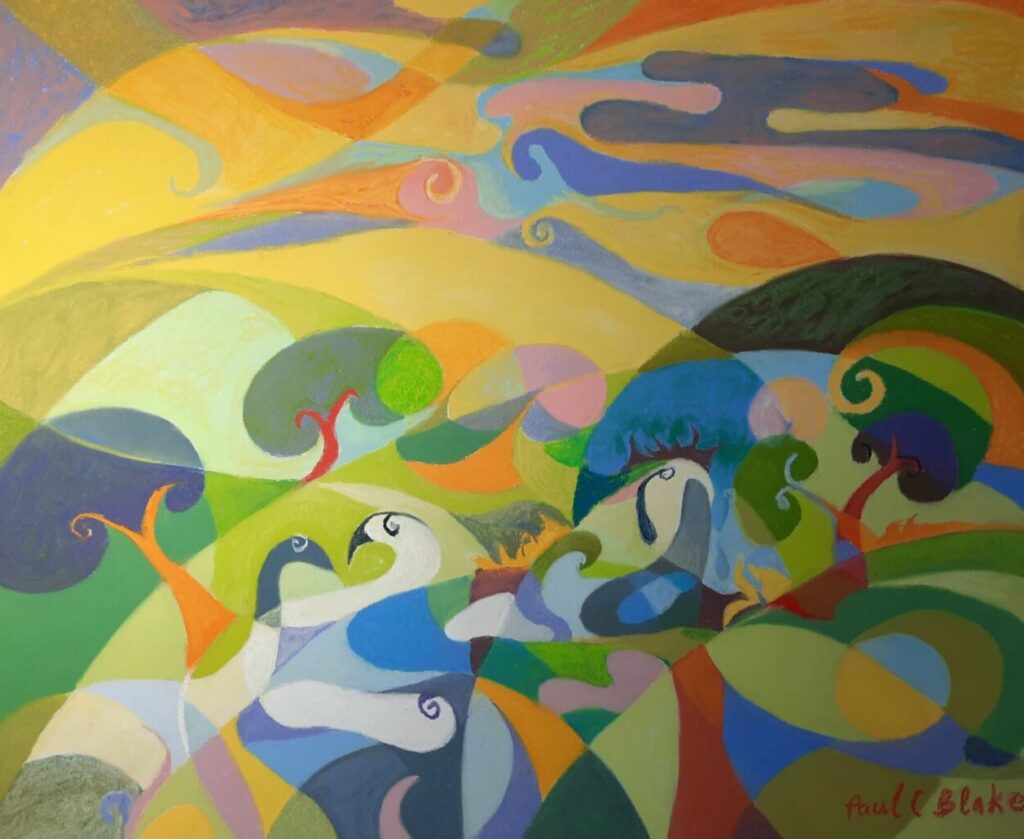
Paul C. Blake
The Place Called Eden in Postmodern Times / Il luogo chiamato Eden in tempi post-moderni
by/di Pamela J. Goldman (traduzione in italiano al fondo pagina)
Who are you?
Paul C. Blake: «I am a native from the Caribbean Island of Jamaica. I later immigrated to the United States in Summer of 1975 at age sixteen. Partly raised in the rural and mountainous Parrish of Manchester, I became a disciple of nature watching Grassquit and John Crows flying from the scraggy mountain sides, over meandering commons bearing pimento and Royal Poinciana trees. Mocking the cry of a blackbird, frolicking in the breeze off the hillsides and catching a ray of sunlight from a backyard boulder, I befriended Nature. Where I was lost in the forest, there, I found my place. When my mother summoned me to attend her flower garden, I became a companion of Nature».
What is your view of mankind’s existence and how do you convey this in your work?
P.C.B.: «In my coming of age while pursuing my art career in the United States, I have gradually come to realize this feeling about human beings living on Earth: It has been said, “We are still in Eden; the wall that shuts us out is our own ignorance”. Even now, my affinity to urban pockets of green spaces beckons the pedestrian nature inside of me. Now, here lies the impetus of my artwork. The continuous timeless reoccurring and evolving themes of American landscape and wilderness are America’s exceptional-ism that is the sustainability in unfolding sublimity of the impressionable changing faces of American spirit of place. The former trailblazers, John James Audubon, Thomas Cole, Ralph Waldo Emerson, Henry David Thoreau, and President Ulysses S. Grant, had passed the baton to latter President Theodore Roosevelt, Ansel Adams, Arshile Gorky, Georgia O’Keeffe, including my contemporaries Richard Mayhew, Daniel Botkin, and April Gornik. My personal aesthetic philosophy hangs on the notion that Paradise is not lost as manifested in Thomas Cole’s painting, Expulsion From The Garden of Eden. Although, the intrusive radiance is now more apparently troublesome, the refrain of the expulsion still lingers with us even now more so than ever before. However, in abstract terms, I hint of shared space in transitional tones of hue where all creatures share an analogous relationship to each other in this colorful and radiant refrain. This vibrant, colorful accord is mostly composed asymmetrically to suggest a slight discord in the harmony. Here, the odd juxtaposition of lines, shapes, and shifting gradients of colors, all contribute to the sense of discordant harmonies to use Botkin’s ecological term. This discord is also sensed in the uncertain abstract presentation of the scene sometimes saturated predominantly by warm colors like yellow and orange or by cool colors like blue and shades of blue greens. Too hot or too cold is the argumentative and inversely proportional dialogues between warm and cool colors. At the same time, I try to maintain the underlying balance and harmony in the repetitive movement of implied lines and transparent shifting of tones and values of selected colors».
What are the biggest influences in your creative choices?
P.C.B.: «Nature is first and most essential to my works. It is my vehicle to the last remnant of the union between flora and fauna. It inspires the evolving abstract and organic images in my works, presently. In the 19th Century Transcendental Philosophy of Ralph Waldo Emerson and through his illuminating essay Nature, I have come to realize this introduction to divine unity and harmony in our natural living experience on Earth. Everywhere I look, all things hastened back to Unity. “A leaf, a drop, a crystal, a moment of time, is related to the whole, and partakes of the perfection of the whole”. This and more were also proposed by Thomas Cole, the leader of the Hudson River School Movement, the notion that “We are still in Eden and the wall that shuts us out is our own ignorance”. But to the contrary, in the year 1828, Thomas Cole painted the Expulsion from the Garden of Eden. Now, however, the idea of a new ecology for the twenty-first century has become most influential in my abstractions of nature in landscape paintings. In this Postmodern turn, the exit out of Eden is defined in Daniel Botkin’s notion of Discordant Harmonies. In the revisions and perceptions of nature as being fluid, inconstant, and various, I have come to the awareness of the tiniest contradictions between the old and the new perceptions of nature. Here lies the true ideas of harmony in nature which by its very essence is discordant. A discord initially founded on disobedience, but now recreated from the simultaneous movements of many tones, a combination of many processes flowing at the same time along various scales. This process leads not to a simple melody, but to a symphony at some times harsh and at some times pleasing».
Are there any artists or art movements you are drawn to and why?
P.C.B.: «Yes, It started with the Hudson River School and now it turned out to be the American Abstract Expressionist Movement. It’s the transition between the two that I fancy. So, I admire the paintings of Thomas Cole, but I’m drawn to the gestural paintings of Arshile Gorky. He had a certain propensity for a gestural freedom based on intuition and memory. In certain works, he recalled his father’s garden in Sochi as I have subconsciously recalled my mother’s garden, in Mandeville. This memory is transparently moving, and suggestive with disregard for functional lines and static or opaque colors. In the meandering, gestural and implied lines, I find that Gorky’s scenes are undefined and pushed to a state of becoming. Nothing in his garden is static, as everything appears dangling or influx. Example his Garden in Sochi 11».
What do you want the viewers of your work to come away with? Is there anything you want them to embrace that is embodied in your artistic expression?
P.C.B.: «The beholder’s share based upon his or her life’s experiences, intuitions or private perceptions are most important to me. So, that been said, I would hope that my works initiate, unbeknownst to the artist intention, meaningful dialogues between members of the viewing audience allowing them to ask themselves questions they hadn’t thought about before. The viewer might not entirely get the intended meaning of the work but he or she can enrich it with his or her own experiences and making the take-away even more interesting».
What materials do you like to work with and can you describe your process?
P.C.B.: «The compositions for my oil and pastel paintings are initially developed from a prepared basic sketch that is subjected to improvisations and revisions in the creation of the final piece. My work on canvas includes a mixed media approach. Here, the primary medium is oil painting. Certain shapes are defined by several secondary media such as glue drips, dried seeds stuck in the impasto of paint, and naturally colored or painted pieces of bur-laps neatly trimmed to be glued to selected already painted shapes on the canvas. My 3D art, that includes decoupage, is somewhat similar to the creative process in my mixed media /oil paintings. This process too involves priming, painting, cutting and pasting of organic, floral, and decorative images. However, the motifs are mostly taken from the ornamental aspect of the natural garden. These images are composed to create a certain continuous narrative in the round of actual form and space. However, my works on paper, are done with soft chalk pastels as a single medium. After coloring, the pastels are smeared with the fingers to achieve a desired effect concerning texture or value intended by the artist. For this reason, I feel intimately close to my pastel paintings because they inconspicuously bears my finger prints. These works are not fixed, but are protected by Conservation Clear Acrylic with a frame».
This exhibit was compiled by Pamela Goldman, Curator and Founder of Museum Mile Contemporary, a non-profit institution.
To send a message to the artist or the administration click the link:
https://www.museummilecontemporary.org/
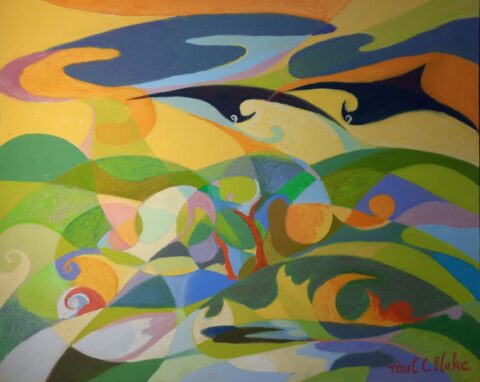
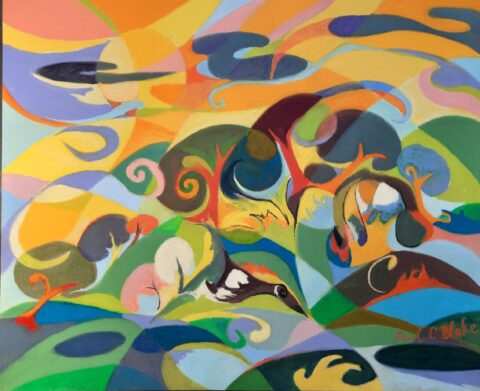
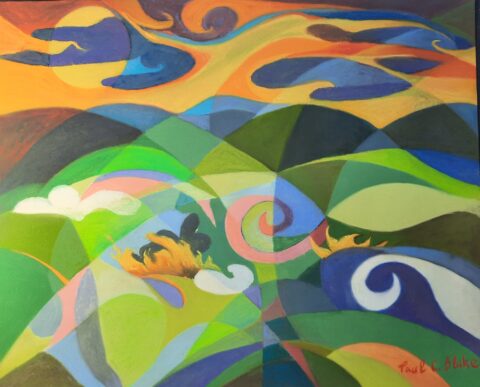
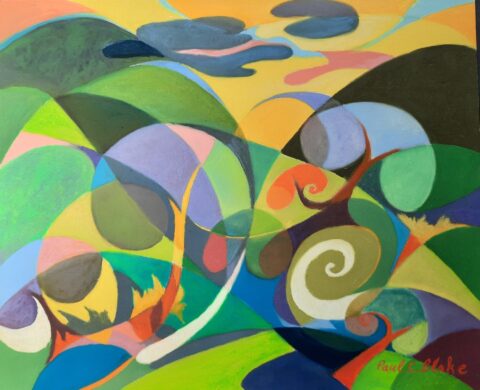
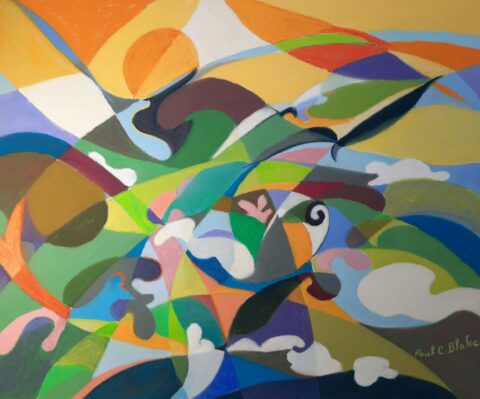
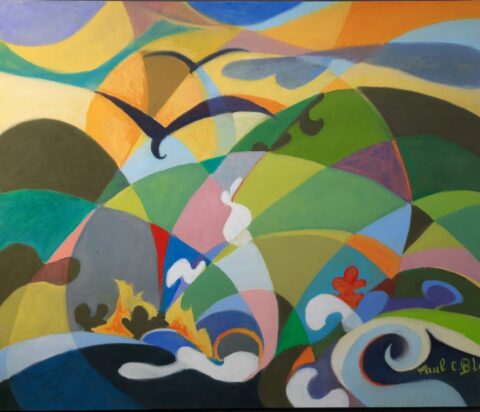
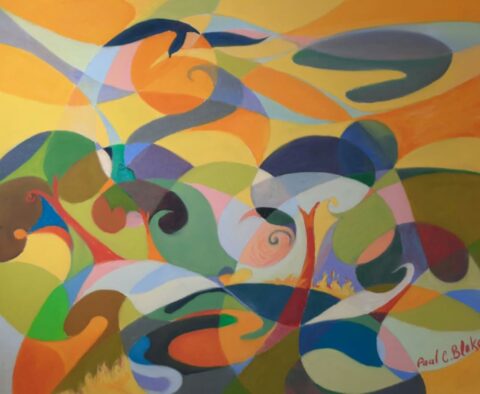
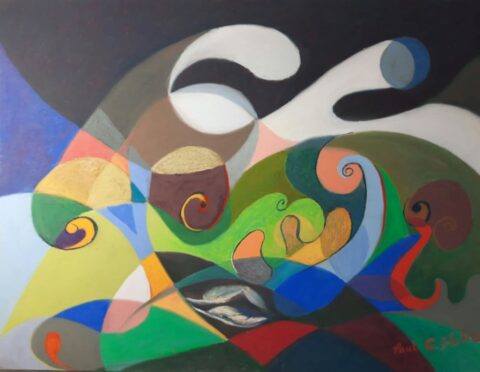
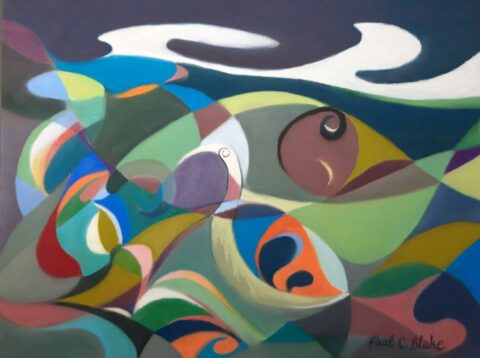
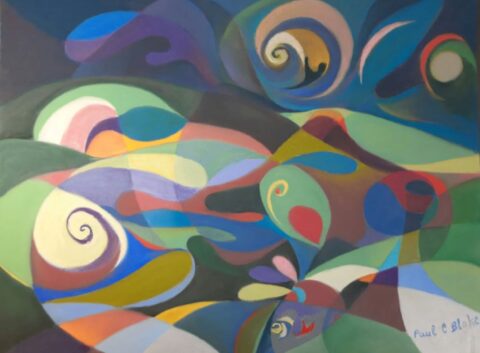
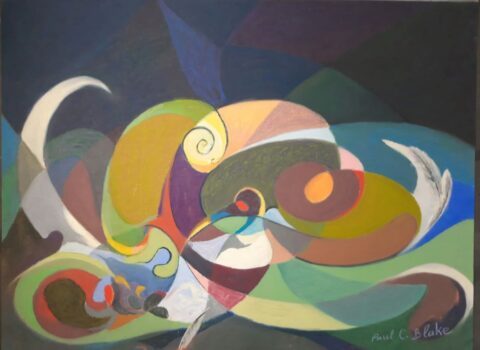
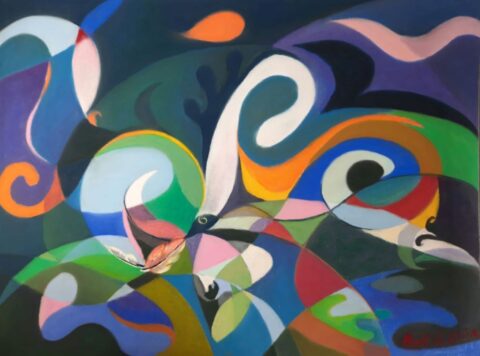
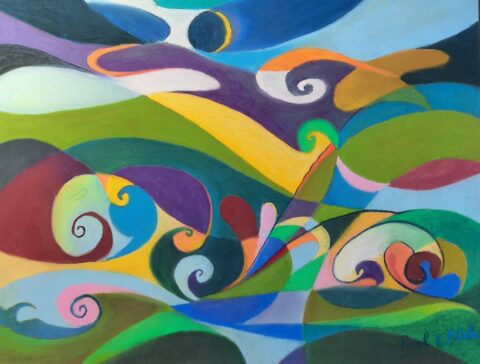
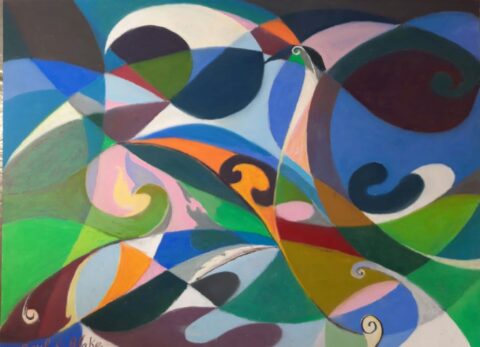
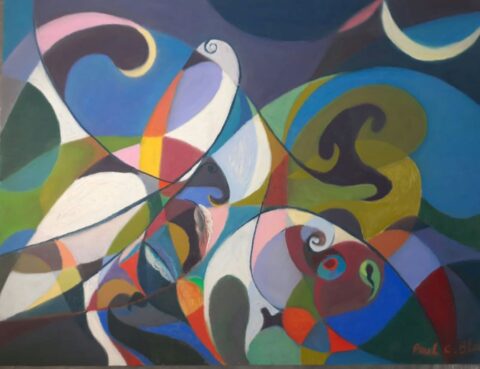
Traduzione in italiano
di Simona Maria Frigerio
Chi è Paul C. Blake?
Paul C. Blake: «Sono nato in Giamaica, ma sono emigrato negli Stati Uniti nell’estate del 1975 all’età di sedici anni. In parte sono stato allevato nella rurale e montuosa Manchester, dove sono diventato un discepolo della natura osservando fringuelli cantori faccianera e avvoltoi collorosso che si innalzavano dalle brulle pendici, su campi tortuosi di pepe della Giamaica e alberi di fuoco. Imitando il richiamo del merlo, scorrazzando nella brezza collinare e catturando un raggio di sole dietro a un masso, ho fraternizzato con la natura. Se mi perdevo nella foresta, lì trovavo il mio posto. Quando mia madre mi chiamava per aiutarla in giardino, ero già amico della natura».
Qual è lo scopo dell’esistenza umana, secondo lei, e come trasmette ciò in cui crede nel suo lavoro?
P.C.B.: «Col trascorrere degli anni, mentre perseguivo la mia carriera artistica negli States, ho gradualmente compreso questo riguardo agli esseri umani: è stato detto: “Siamo ancora nell’Eden; il muro che ci tiene fuori è la nostra ignoranza”. Persino adesso, la mia affinità con gli spazi verdi urbani richiama la natura di viandante che è in me. In ciò risiede l’impeto del mio lavoro artistico. I paesaggi e la natura selvaggia degli Stati Uniti tornano incessantemente e mostrano il lato sublime dell’impressionante numero di facce che contraddistinguono lo spirito di questo Paese. Basti pensare ai pionieri, quali John James Audubon, Thomas Cole, Ralph Waldo Emerson, Henry David Thoreau e il Presidente Ulysses S. Grant – che ha passato la staffetta al Presidente Theodore Roosevelt – Ansel Adams, Arshile Gorky, Georgia O’Keeffe, e perfino alcuni miei contemporanei come Richard Mayhew, Daniel Botkin e April Gornik. La mia personale filosofia estetica si regge sulla nozione che il paradiso non è perduto, come appare nel quadro di Thomas Cole, Expulsion from the Garden of Eden. Sebbene il suo splendore possa oggi apparire più problematico, il ritornello dell’espulsione persiste in noi persino maggiormente che in passato. Comunque, in termini astratti, io alludo a uno spazio condiviso grazie a sfumature che permettono a tutte le creature di relazionarsi in questo refrain colorato e luminoso. Tale accordo cromatico è, per la maggior parte, composto asimmetricamente per suggerire una lieve discordanza nell’armonia. Quindi, l’insolita giustapposizione di linee e forme, e i passaggi coloristici, tutto contribuisce a creare un senso di armonie discordanti – per usare la terminologia coniata dall’ecologista Daniel Botkin. Questa discordanza si percepisce altresì attraverso una presentazione non precisamente astratta della scena, a volte saturata in maniera predominante da colori caldi, quali il giallo o l’arancione, e altre da tinte fredde come il blu e sfumature di verde/azzurro. Troppo caldo o troppo freddo: questo il dialogo tra le tinte, di genere argomentativo e inversamente proporzionale. Allo stesso tempo, cerco di mantenere un equilibrio sottostante e un senso di armonia nel movimento ripetitivo di linee significanti e nel passaggio trasparente dei toni oltre che nel valore insito nei colori scelti».
Nelle sue scelte creative, chi l’ha maggiormente influenzata?
P.C.B.: «La natura innanzi tutto: è il mezzo grazie al quale conquisto l’ultimo anello di congiunzione tra fauna e flora. Al momento, ispira le immagini organiche e astratte in continua evoluzione presenti nei miei lavori. Grazie alla filosofia trascendentale novecentesca di Ralph Waldo Emerson e ai suoi saggi illuminanti sulla natura, sono stato introdotto all’unità divina e all’armonia presenti nella nostra esperienza di vita sulla Terra. Ovunque fissi il mio sguardo, noto che le cose si affrettano a tornare all’unità: “Una foglia, una goccia, un cristallo, un attimo si relazionano direttamente al tutto, e condividono la perfezione del tutto”. Quanto dico è stato spiegato da Thomas Cole, il fondatore della Hudson River School, così come è sua la nozione che: “Siamo ancora nell’Eden; il muro che ci tiene fuori è la nostra ignoranza”. Nonostante ciò, nel 1828, Thomas Cole dipinse Expulsion from the Garden of Eden. In ogni caso, l’idea di una nuova ecologia per il XXI° secolo è diventata preminentemente importante nelle astrazioni della natura dei miei paesaggi. Nell’epoca post-moderna, la cacciata dall’Eden è definita dalla terminologia succitata di Daniel Botkin. Percepire la natura come fluida, incostante e cangiante, mi ha reso consapevole delle minime contraddizioni tra il passato e il presente modo di concepire la natura stessa. L’idea autentica dell’armonia naturale risiede nella sua essenza discordante. Una forma di discordia, all’inizio causata dalla disobbedienza, ma ricreata dai movimenti simultanei dei toni, una combinazione di processi che fluiscono contemporaneamente lungo diverse scale. Tale processo non conduce a una semplice melodia, bensì a una sinfonia – a volte stridente e altre piacevole».
Si sente in consonanza con altri artisti o movimenti? E se sì, perché?
P.C.B.: «In passato con la Hudson River School e, attualmente, con l’American Abstract Expressionist Movement. Ciò che immagino è a metà strada tra i due. Ammiro i quadri di Thomas Cole, ma sono attirato da Arshile Gorky. Quest’ultimo aveva una certa propensione per la libertà del gesto basata sull’intuizione e la memoria. In alcuni lavori ritorna al giardino paterno a Sochi così come io richiamo alla memoria, inconsciamente, il giardino di mia madre a Mandeville. Le memorie trasportano e risultano suggestive, così che si finisce per ignorare la funzione delle linee, le regole della statica o dei colori opachi. Nelle linee gestuali e tortuose, trovo che le scene dipinte da Gorky non siano definite ma spinte a uno stato in divenire. Niente nel suo giardino è statico, e tutto appare soggetto a un flusso. E ciò si avverte anche in Garden in Sochi 11».
Cosa vuole trasmettere a chi osserva i suoi quadri? Desidera che lui o lei condivida qualcosa di ciò che la sua espressione artistica incarna?
P.C.B.: «Ciò che l’osservatore condivide, in base alla sua esperienza di vita, alle sue intuizioni o percezioni private è per me massimamente importante. Detto questo, spero che i miei lavori trasmettano, all’insaputa delle mie stesse intenzioni, dialoghi significativi tra i membri dell’audience, così da far loro porre domande a se stessi alle quali non hanno mai pensato prima. Colui che osserva le mie opere può non coglierne l’esatto significato o arricchirle delle proprie esperienze in modo tale da renderle persino più interessanti».
Quali materiali utilizza nei suoi lavori? Può descrivere il suo processo artistico?
P.C.B.: «Le composizioni per i miei lavori – sia a pastello sia a olio – partono da uno schizzo, che è soggetto a improvvisazioni e revisioni nel corso della creazione e fino alla finalizzazione dell’opera. I lavori su tela includono tecniche diverse. Innanzi tutto, la pittura a olio. Alcune forme sono definite da altri mezzi, come gocce di colla, semi essiccati mischiati all’impasto della pittura, e naturalmente pezzi colorati o pitturati di tela tagliati e incollati su forme selezionate del quadro. La mia è un’arte tridimensionale, che include tecniche quali il découpage, ed è simile sia nei quadri a olio sia in quelli a tecnica mista. Il processo coinvolge mestica, pittura, ritaglio e l’incollare immagini organiche, floreali e decorative. Comunque, i motivi sono perlopiù tratti dai temi ornamentali di un giardino naturale. Le immagini sono composte per creare una narrazione continua di forma e spazio a tutto tondo. D’altro canto, i miei lavori su carta sono eseguiti con pastelli morbidi e nient’altro. Dopo aver colorato il quadro, sfumo i colori a pastello con le dita così da raggiungere l’effetto desiderato. Per questa ragione, mi sento intimamente connesso con tali opere dato che possiedono – letteralmente – la mia impronta. Non subiscono finissaggio ma sono protette con il vetro AR».
Mostra virtuale a cura di Pamela Goldman, Curatore e Fondatore del Museum Mile Contemporary, istituzione no-profit.
Per inviare un messaggio all’artista o all’amministratore del sito, cliccare:
https://www.museummilecontemporary.org/
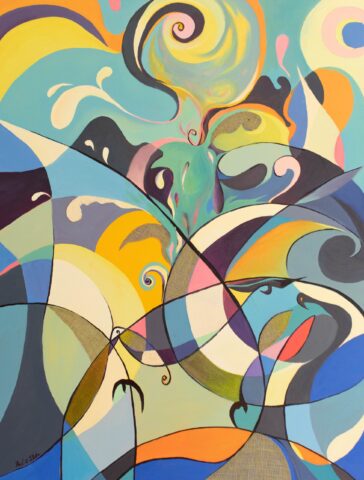
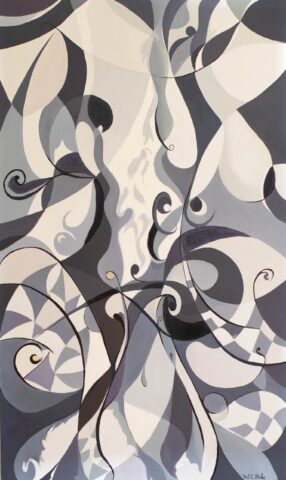
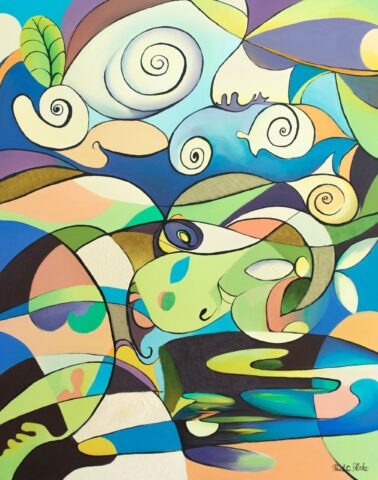
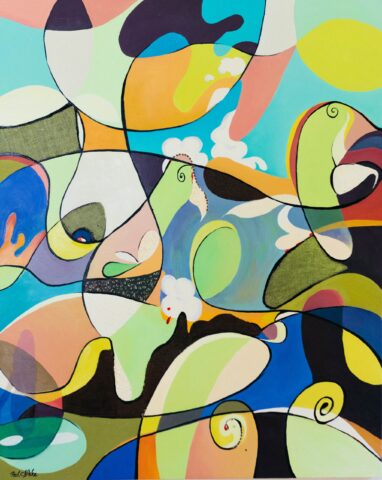
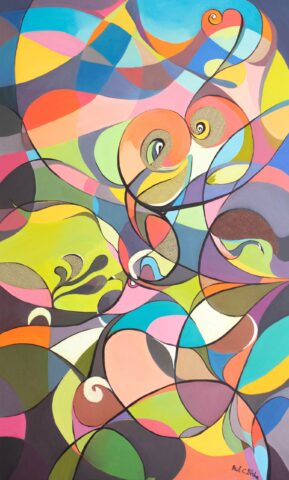
Friday, September 30, 2022 / venerdì, 30 settembre 2022
On the cover and in the article: all images courtesy by the artist ©Paul C. Blake (all rights reserved. Reproduction prohibited) / In copertina e nell’articolo: tutte le immagini courtesy l’artista, ©Paul C. Blake (tutti i diritti riservati. Vietata la riproduzione).







